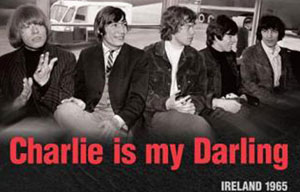Paint the world a picture
Updated: 2013-10-25 01:58
By Xu Jingxi (China Daily)
|
||||||||
Despite a growing interest in China, artworks from the country remain under-represented in the world's great galleries. Xu Jingxi chats with leading curators about how contemporary artists can take their place on the global stage.
Chinese art lovers bemoan the fact an ink painting by Zhang Daqian, one of the world's best-known Chinese artists of the 20th century, has been lying in storage since it was collected by the New York-based Museum of Modern Art in 1961.
"Ink painting is not so important in Western art as it is in Chinese art. Zhang's Lotus is the only ink painting we have, and it's difficult to fit it into our collection," Jay A. Levenson, director of the MoMA's International Program, says of why the painting has not been displayed.
Ancient artifacts, such as china, bronzeware and jade articles, have long dominated Western art museums' exhibitions of Chinese art.
But China's rise to become a powerful voice in the global community has sparked a growing interest in Chinese contemporary art.
However, because of the late start and skyrocketing prices, the scale of collections of recent Chinese art in Western art museums is still very small.
The MoMA started seriously collecting in the late 1990s, and only has about 70 pieces of Chinese art in its collection of 100,000 items.
At a Sotheby's auction in Hong Kong on Oct 5, Beijing-based painter Zeng Fanzhi's oil painting The Last Supper was sold for HK$180 million ($23.2 million), a new record for a contemporary Asian artwork. The painting, full of absurdity and irony, was inspired by Leonardo da Vinci's medieval mural of the same name.
Aside from the prices, Western institutions are faced with a unique problem when collecting recent art from China, according to Levenson.
"Art that is old-fashioned in the West may be considered modern and contemporary in China because it was started later in the country," Levenson says.
In his opinion, the internationally recognizable contemporary art in China started after the "cultural revolution" (1966-76) when Chinese artists "had a real dialogue with Western art".
"They traveled or moved to the West, seeking publication for their artworks inspired by Western art. This type of Chinese art is very close to Western art, so it's the easiest kind for our museum to bring into our collection," he says.
Cai Guoqiang, the artist behind the installation piece Borrowing Your Enemy's Arrows, which is the MoMA's first major Chinese contemporary art piece, was one of those artists who ventured out, moved to New York in 1995.
A giant boat, struck by 3,000 arrows, "floats" into the air in the exhibition hall. It has a strong visual impact and provokes the viewer to consider the "global" issue of cultural clash by "manipulating materials with skills similar to Western artists", Levenson says.
It's understandable for Western art museums to choose works and define modern and contemporary art based on Western values, says Lee Sook-kyung, a research curator from Tate Research Centre of Asia-Pacific in London.
She says she thinks art museums in China should encourage Chinese contemporary artists to showcase more individuality in their works rather than catering to Western tastes.

 Post-baby Duchess
Post-baby Duchess
 Victoria Beckham S/S 2014 presented during NYFW
Victoria Beckham S/S 2014 presented during NYFW
 'Despicable' minions upset Depp's 'Lone Ranger' at box office
'Despicable' minions upset Depp's 'Lone Ranger' at box office
 'Taken 2' grabs movie box office crown
'Taken 2' grabs movie box office crown
 Rihanna's 'Diamonds' tops UK pop chart
Rihanna's 'Diamonds' tops UK pop chart
 Fans get look at vintage Rolling Stones
Fans get look at vintage Rolling Stones
 Celebrities attend Power of Women event
Celebrities attend Power of Women event
 Ang Lee breaks 'every rule' to make unlikely new Life of Pi film
Ang Lee breaks 'every rule' to make unlikely new Life of Pi film
Most Viewed
Editor's Picks

|

|

|

|

|

|
Today's Top News
Vice-premier calls for strengthened EU ties
Spy claims stir rebuke to Obama
Traders in Yiwu cashing in on e-commerce shops
PMI heads for 7-month high
Ministry to begin inspecting most heavily polluted regions
Ban to help protect kids from sexual predators
Returnees are 'seed capital' for startups
US firms urge easier process for investment
US Weekly

|

|









